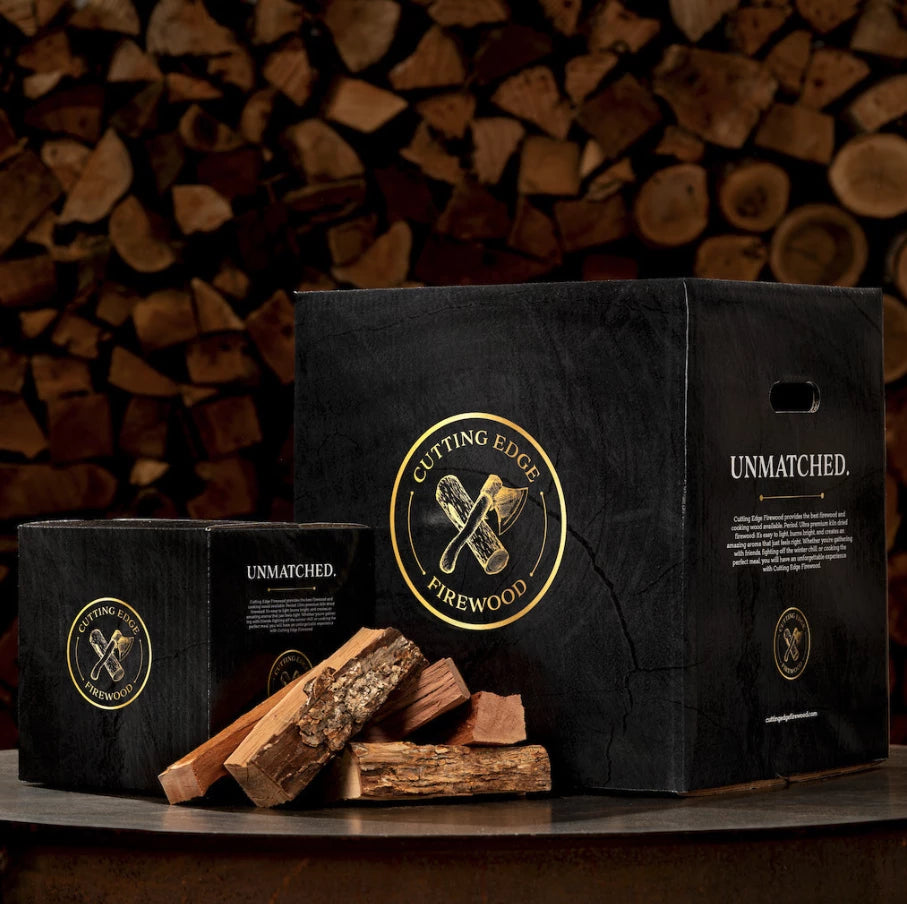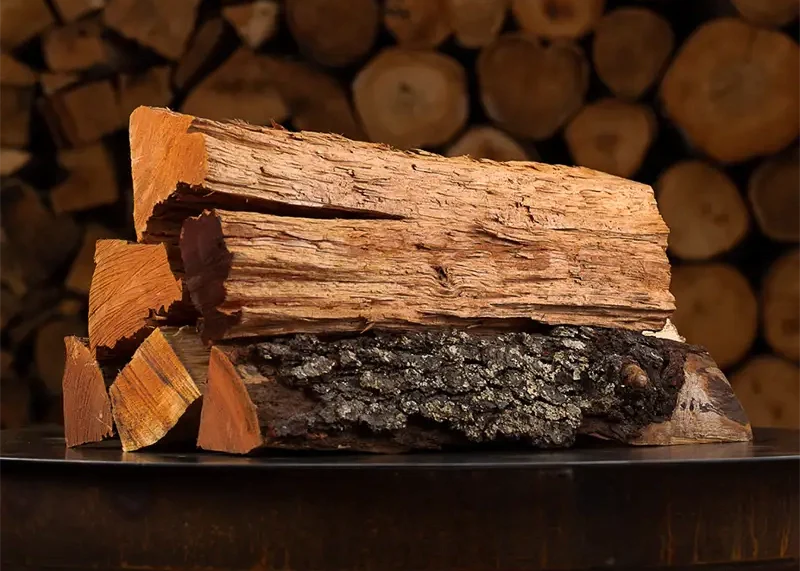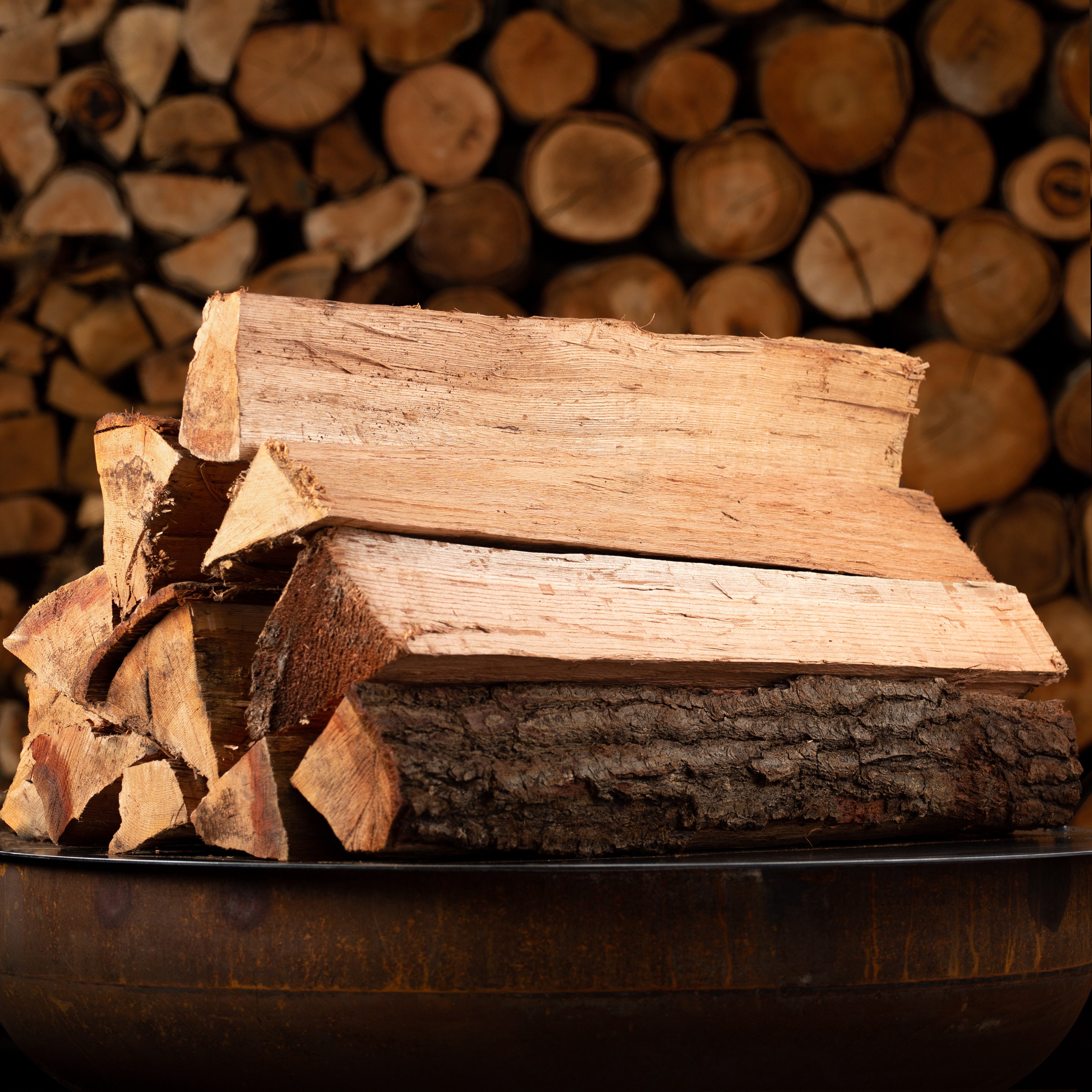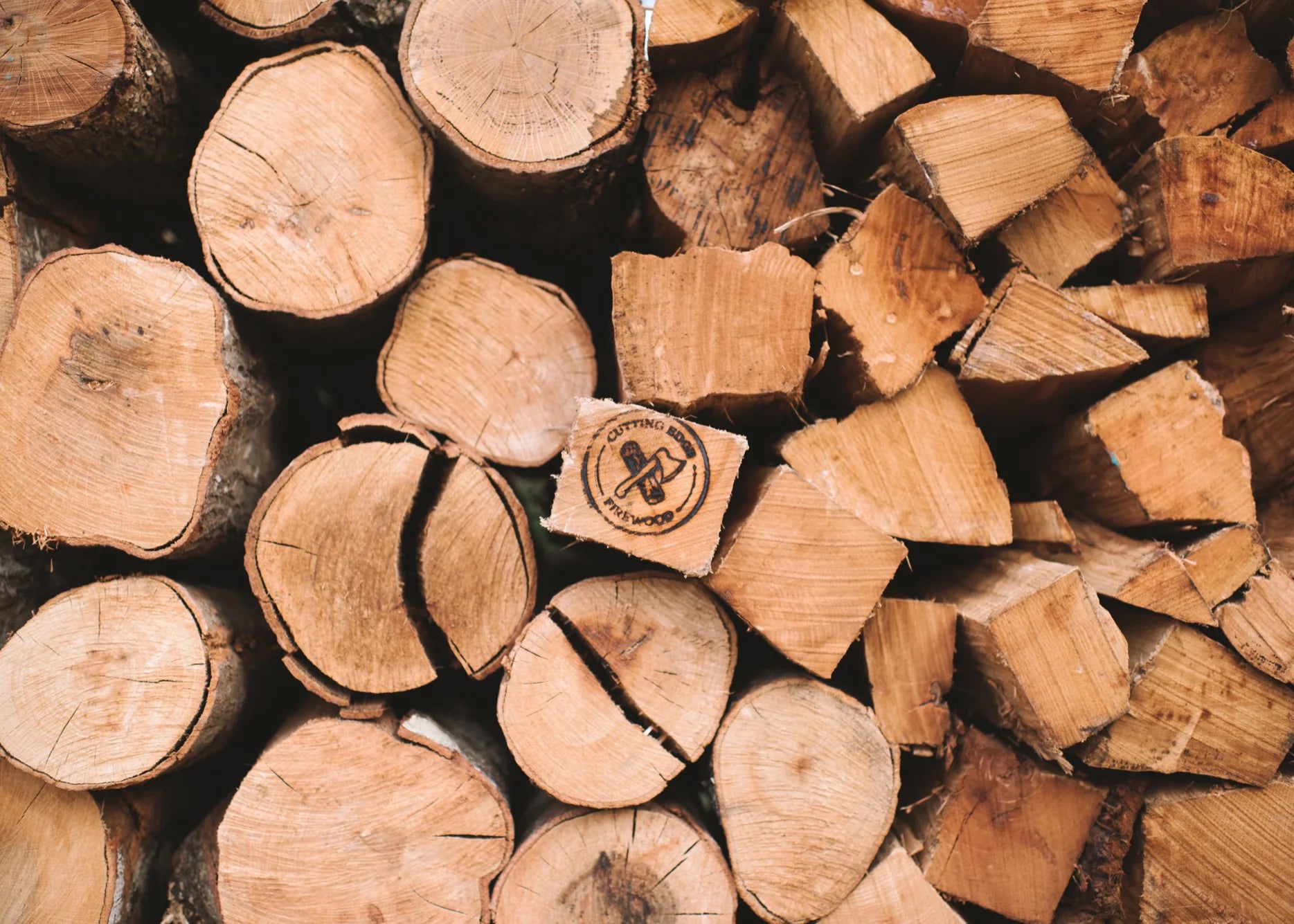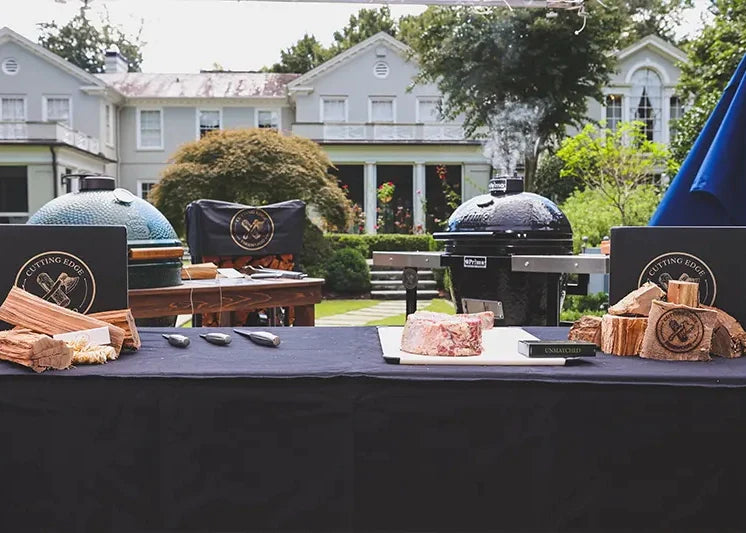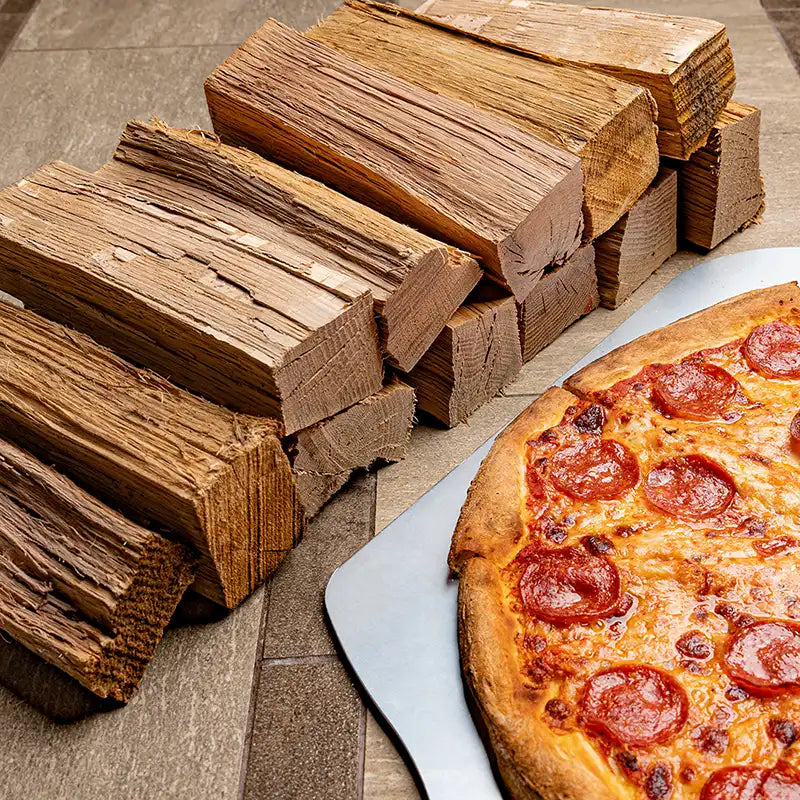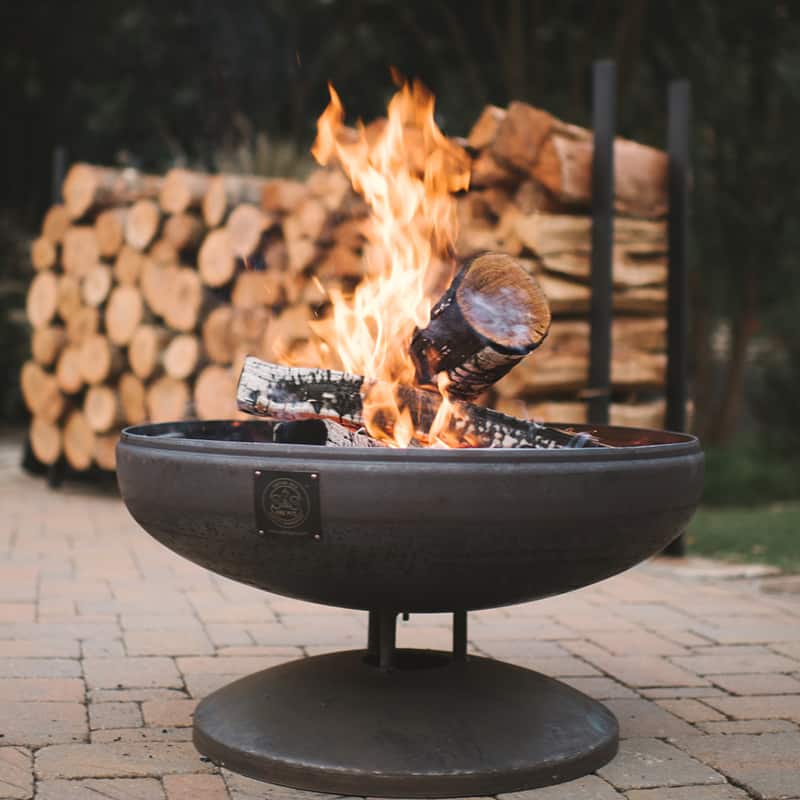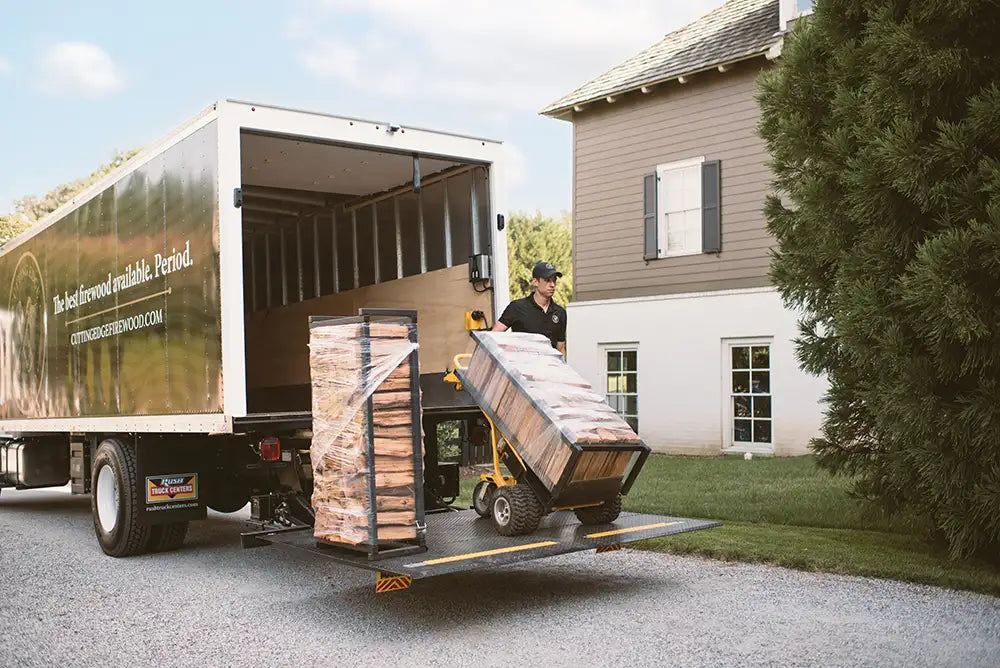Millions of U.S homes are constructed with a wood-burning fireplace. Consisting primarily of a firebox, flue and chimney, it allows homeowners and their family members to safely build fires inside their home using wood as fuel. While you're probably familiar with the basic function of a wood-burning fireplace, you might be surprised to learn some of the benefits they offer. Below are nine benefits of having a wood-burning fireplace in your home.
#1) Natural Focal Point
A wood-burning fireplace serves as a natural focal point. When you and your family members gather in the living room, the wood-burning fireplace will likely be the center of the attention. It offers a unique and traditional focal point that's not found in other living room accessories. With that said, you can also integrate a TV into your fireplace's design. Many homeowners install a TV in their living room above the fireplace mantel.
#2) Heating During Power Outages
During winter snowstorms, ice will collect and form on tree branches. This added weight can cause them to fall and knock out under-hanging power lines. And once the power goes out, you won't be able to heat your home using central heating. The good news is that warm your home during power outages such as this using a wood-burning fireplace. As long as you have plenty of dry firewood stockpiled, you can build and maintain a hot fire that radiates heat throughout your home. This alone is reason enough for many home buyers to choose a place with a wood-burning fireplace. Power outages are relatively uncommon in the Southeast, but they can and do occur. With a wood-burning fireplace, you can keep your home warm and comfortable until the power returns.
#3) Increased Home Value
When you get ready to sell your home, you may get better offers if it features a wood-burning fireplace. According to a survey conducted by the National Association of Realtors (NAR), a fireplace increases the value of a home by an average of $1,220. With that said, some buyers were willing to pay over $2,000 more for a home with a wood-burning fireplace. How exactly does a wood-burning fireplace increase the value of a home? Well, as you can see here, they offer a variety of aesthetic and functional benefits.

#4) Cheaper Utility Bills During the Winter
You can expect to pay less in utility expenses during the winter if your home has a wood-burning fireplace. Whether it's gas or electric, central heating is expensive. Rather than relying strictly on central heating, however, you can use your fireplace to offset this cost. One study found that over 11 million homes in the United States use wood as their primary or secondary source of heat. It's a cheaper and equally if not more effective way to heat your home during the otherwise cold winter months. It doesn't consume electricity, power or gas. It only uses wood, which the fireplace burns to produce heat that warms your home.
#5) Pleasant Aroma
A wood-burning fireplace offers a pleasant and distinct aroma that most people enjoy. Nothing compares to the aroma of a wood-burning fire. As the firewood burns, it will release unburned particles that manifest as an aroma. Different species of wood produce different aromas. Cherry firewood, for example, has a mildly sweet and fruity aroma, whereas hickory firewood has a richer and heartier aroma. Regardless, building fires with high-quality firewood will produce a pleasant aroma that you and your family members will appreciate.
So, which variety of firewood offers the best aroma? It really depends on your personal preference. Some people prefer the aroma of cherry firewood, whereas others prefer the aroma or hickory or oak. You really won't know which variety of firewood produces the best aroma until you use them in your wood-burning fireplace. By experimenting with different varieties, you can find the perfect aroma for your home.
#6) Natural Lighting
It's also worth mentioning that a wood-burning fireplace will produce natural light. Rather than using traditional lighting, such as an overhead fixture or free-standing lamp, you can use your wood-burning fireplace. As the wood burns, it will produce both heat and light. Granted, a wood-burning fireplace isn't a substitution for traditional lighting. However, you can still use it to illuminate your home during the evenings. If you're watching a movie, for example, a fire can offer just enough light so that you and your family members can comfortably see without creating a blinding glare on the screen.
#7) Costs Less Than Gas Fireplaces
When compared to gas fireplaces, wood-burning fireplaces cost less to operate. Prices for natural gas have dropped throughout the country in recent years. Nonetheless, gas fireplaces still cost more to operate than their wood-burning counterparts. You'll spend less money using a wood-burning fireplace than you would using a gas fireplace.
Gas fireplaces constantly consume natural gas while burning. If you use a gas fireplace for four hours, you'll be charged for all the natural gas consumed during those four hours. With a wood-burning fireplace, on the other hand, you only have to purchase wood. And even the highest-quality firewood, such as kiln dried firewood, costs significantly less than natural gas, which is just one more benefit of owning a wood-burning fireplace in your home.

#8) Environmentally Friendly
You can rest assured knowing that wood-burning fireplaces are environmentally friendly. Whether it's oak, hickory, cherry or any other species, wood is a sustainable and renewable resource. Many species of hardwoods reach maturity in just 20 to 30 years. The trees are cut down and processed into firewood, after which new seeds are planted in their wake. It's a sustainable practice that makes wood-burning fireplaces environmentally friendly.
Furthermore, when compared to fossil fuels, wood is less taxing on the environment. If you use central heating to warm your home, you might be using electricity that's created by the burning of fossil fuels. When burned, wood doesn't release as much carbon dioxide into the atmosphere as fossil fuels. At the same time, trees absorb carbon dioxide from their surrounding atmosphere while they grow. If you're an environmentally conscious person, you should take advantage of your home's wood-burning fireplace this winter.
#9) Low Maintenance
Some people assume that wood-burning fireplaces require a lot of work and time to maintain, but this isn't necessarily true. Aside from shoveling and disposing of ash at the bottom of the firebox, that's pretty much the only maintenance they require. After building a fire in your wood-burning fireplace, wait until the ashes have fully cooled (usually takes about two to three days). Once cooled, scoop the ashes with a shovel and move them to a metal container. You can then either dispose of the ashes or save it for other purposes.
Why would you want to save the ashes from your wood-burning fireplace? Because of its mineral content, wood ash makes excellent plant fertilizer. You can sprinkle it around in your garden to bolster the health of your flowers and trees. Wood ash even deters common garden pests like slugs and snails. Pests such as these will avoid traveling over wood ash. These are just a few benefits of owning a home with a wood-burning fireplace.
Check out our premium firewood to use in your home's wood-burning fireplace by visiting our online store today.

